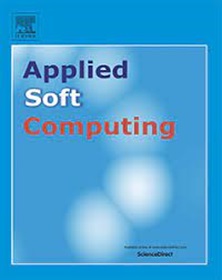A MIL-based framework via contrastive instance learning and multimodal learning for long-term ECG classification
IF 7.2
1区 计算机科学
Q1 COMPUTER SCIENCE, ARTIFICIAL INTELLIGENCE
引用次数: 0
Abstract
Recently, deep learning-based models are widely employed for electrocardiogram (ECG) classification. However, classifying long-term ECGs, which contain vast amounts of data, is challenging. Due to the limitation of memory with respect to the original data size, preprocessing techniques such as resizing or cropping are often applied, leading to information loss. Therefore, introducing multi-instance learning (MIL) to address long-term ECG classification problems is crucial. However, a major drawback of employing MIL is the destruction of sample integrity, which consequently hinders the interaction among instances. To tackle this challenge, we proposed a multimodal MIL neural network named CIMIL, which consists of three key components: an instance interactor, a feature fusion method based on attention mechanisms, and a multimodal contrastive instance loss. First, we designed an instance interactor to improve the interaction and keep continuity among instances. Second, we proposed a novel feature fusion method based on attention mechanisms to effectively aggregate multimodal instance features for final classification, which selects key instances within each class, not only enhances the performance of our model but also reduces the number of parameters. Third, a multimodal contrastive instance loss is proposed to enhance the model’s ability to distinguish positive and negative multimodal instances. Finally, we evaluated CIMIL on both intrapatient and interpatient patterns of two commonly used ECG datasets. The experimental results show that the proposed CIMIL outperforms existing state-of-the-art methods on long-term ECG tasks.
基于 MIL 的框架,通过对比实例学习和多模态学习实现长期心电图分类
最近,基于深度学习的模型被广泛用于心电图(ECG)分类。然而,对包含大量数据的长期心电图进行分类是一项挑战。由于内存相对于原始数据大小的限制,通常会采用调整大小或裁剪等预处理技术,从而导致信息丢失。因此,引入多实例学习(MIL)来解决长期心电图分类问题至关重要。然而,采用 MIL 的一个主要缺点是会破坏样本的完整性,从而阻碍实例之间的交互。为了应对这一挑战,我们提出了一种名为 CIMIL 的多模态 MIL 神经网络,它由三个关键部分组成:实例交互器、基于注意机制的特征融合方法和多模态对比实例丢失。首先,我们设计了一个实例交互器,以改进实例之间的交互并保持连续性。其次,我们提出了一种基于注意力机制的新型特征融合方法,以有效聚合多模态实例特征进行最终分类,该方法在每个类别中选择关键实例,不仅提高了模型的性能,还减少了参数数量。第三,我们提出了多模态对比性实例损失,以增强模型区分正负多模态实例的能力。最后,我们在两个常用心电图数据集的患者内和患者间模式上对 CIMIL 进行了评估。实验结果表明,在长期心电图任务中,所提出的 CIMIL 优于现有的最先进方法。
本文章由计算机程序翻译,如有差异,请以英文原文为准。
求助全文
约1分钟内获得全文
求助全文
来源期刊

Applied Soft Computing
工程技术-计算机:跨学科应用
CiteScore
15.80
自引率
6.90%
发文量
874
审稿时长
10.9 months
期刊介绍:
Applied Soft Computing is an international journal promoting an integrated view of soft computing to solve real life problems.The focus is to publish the highest quality research in application and convergence of the areas of Fuzzy Logic, Neural Networks, Evolutionary Computing, Rough Sets and other similar techniques to address real world complexities.
Applied Soft Computing is a rolling publication: articles are published as soon as the editor-in-chief has accepted them. Therefore, the web site will continuously be updated with new articles and the publication time will be short.
 求助内容:
求助内容: 应助结果提醒方式:
应助结果提醒方式:


